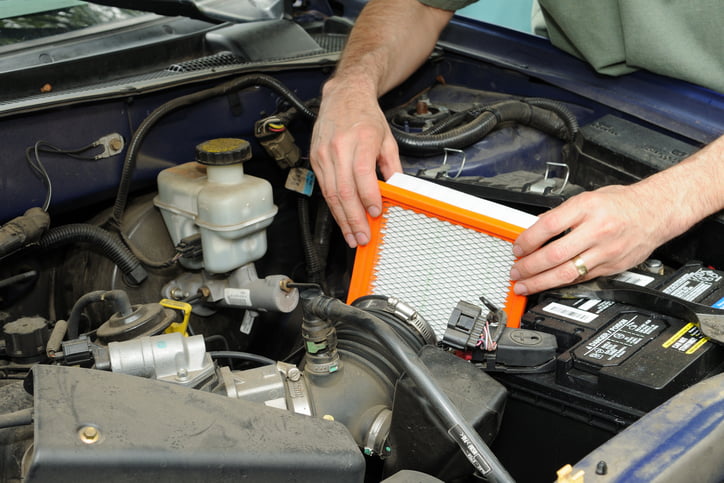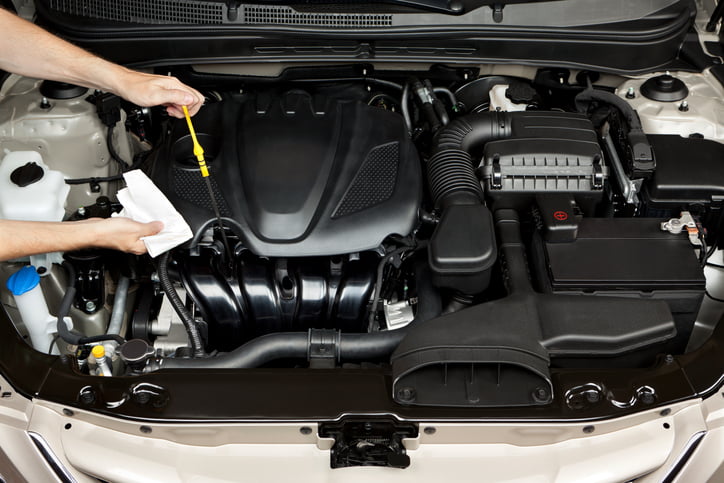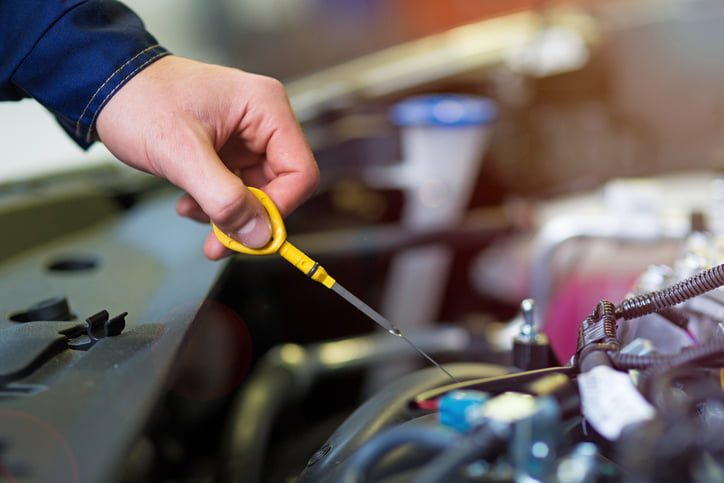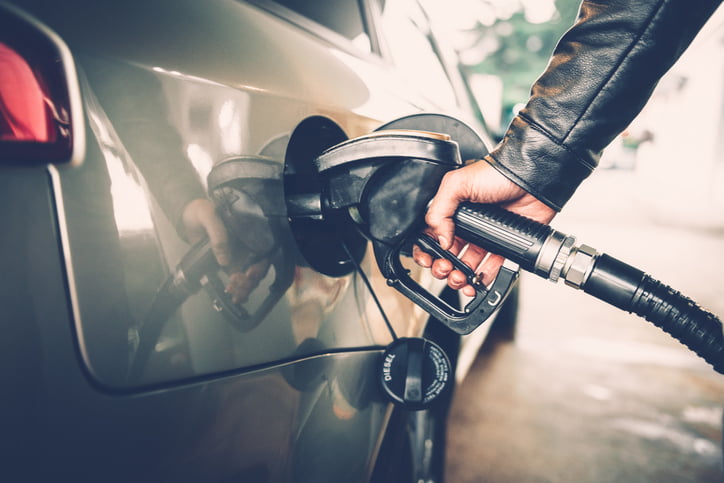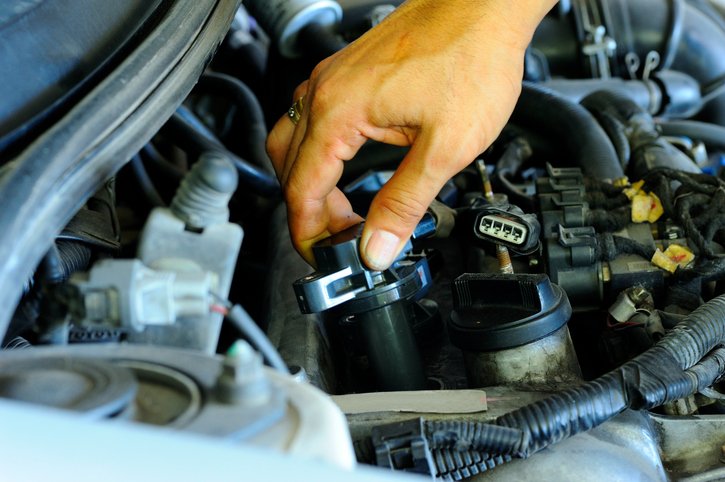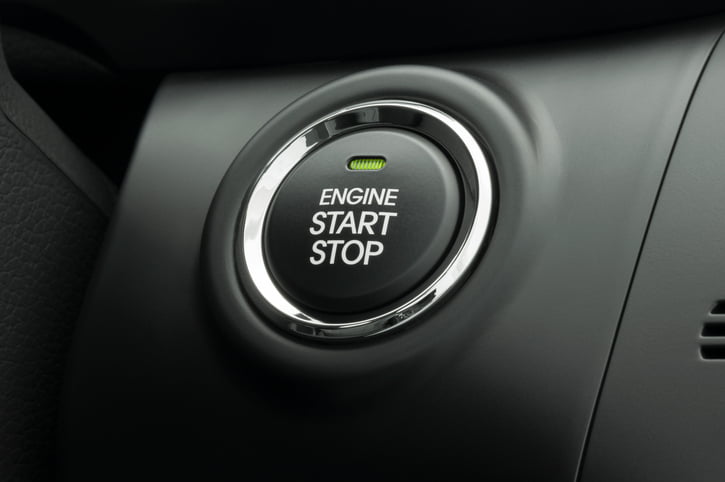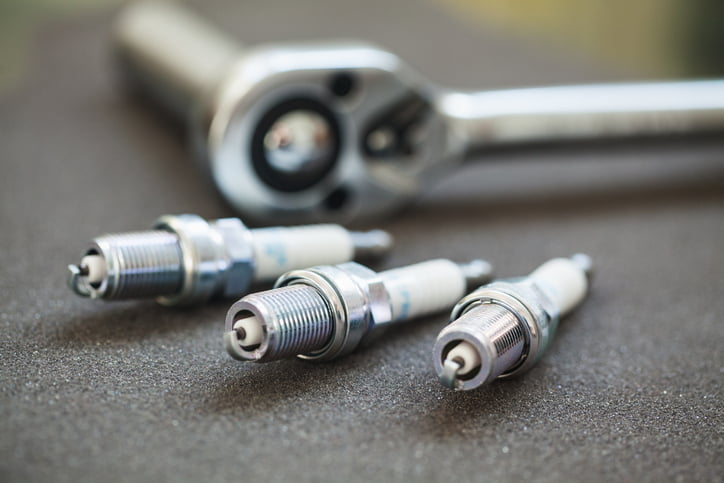Whether you’re a new driver hoping to learn about how cars work or a seasoned motorist looking to diagnose an underlying engine problem, our in-depth A-Z car engine glossary is here to help you brush up on your knowledge of what goes on beneath the bonnet.
A B C D E F G H I K L M N O P R S T V W
A
ABS (Antilock Braking System)
This computer-controlled unit stops the brakes from locking under heavy braking, allowing the wheels to continue turning freely to prevent a skid.
AdBlue®
A fuel additive used in diesel cars to reduce emissions, often by as much as 80%. AdBlue® is an essential fluid in a diesel engine, and without it the car won’t start. AdBlue® makes topping up the fluid easy, for complete peace of mind.
Air Filter
The air filter sits at the front of the air intake system, where it catches dirt, dust and debris that can hinder engine performance. Filters are disposable, and should be replaced regularly to guarantee optimum engine health.
Air Pump Filter
This pump sits in the air intake system and is used to remove any contaminants which have found a way through the air filter, before they reach the air injection system.
Alternator
The alternator charges the battery and powers electronic systems in the car when the engine is running.
Automatic Transmission Fluid
The fluid that lubricates moving parts in an automatic transmission system. This is held in a reservoir, and should be kept fully topped up to ensure the health of the transmission and gears.
B
Biodiesel
A type of biofuel made from a mixture of diesel and a plant-based fuel, which gives off lower emissions than standard diesel.
Block Heater
A heater, powered by the battery, which preheats coolant/antifreeze in the engine block, helping the car to start in extremely cold temperatures.
Brake Master Cylinder
The brake cylinder stores brake fluid and forces it through the brake lines and hoses hydraulically.
C
Carburettor
Carburettors have now been replaced by fuel injectors, but may still be found on older cars. They mix fuel and air to the correct ratio for combustion, but were replaced due to poor fuel economy.
Catalytic Converter
The catalytic converter controls the number of toxic gases emitted from a car’s exhaust system, filtering the air and converting into less harmful pollutants.
Charge Pipe
In turbo-powered engines, the charge pipe carries compressed air from the turbo unit back to the engine, allowing the air to circulate for greater economy and performance.
Learn more about turbo-charged engines.
Combined Fuel Economy
The average mileage of a car using one gallon of fuel, including an average ratio of 55% motorway or A-road driving and 45% city driving. This is measured in MPG.
Crankshaft
The main rotating component of an engine; the crankshaft supplies power to the drivetrain.
Cylinder
Cylinders are the main part of an engine, and the space in which the piston travels. Cylinders are normally arranged side by side, and you can find out more about cylinder arrangements in our guide to the different types of car engine.
D
Distributor
The distributor routes voltage from the ignition coil to the spark plugs in a set firing order, allowing the engine to turn over. Connected to the camshaft, it consists of a rotating shaft inside an enclosed metal housing, which carries the voltage from the coil to the spark plugs by a small carbon brush.
Diesel Particulate Filter (DPF)
A device used to remove soot and particles from the exhaust system of a diesel engine, reducing the number of harmful toxins emitted into the air. Click to learn more about DPFs.
Dipstick
A rod used to check the level and condition of engine oil.
Down Pipe
The down pipe is an important part of an engine’s exhaust system, running between the header and the catalytic converter. In turbo-charged engines, the down pipe is often replaced with a more high-performance version, allowing for a faster recirculation of compressed air to the engine.
Drivetrain
Drivetrain refers to the system of components that enable a car to move, including the engine, clutch assembly, transmission and wheels.
E
ECU (Engine Control Unit)
The ECU controls various components, ensuring peak engine performance. It relies on sensors to monitor several systems, including the valve timing and air/fuel mix. If the ECU discovers a problem, the ‘Check Engine’ light will be displayed on the dashboard.
Engine Block
The engine block is a sealed unit containing the cylinders and the surrounding components, including coolant pipes, air intake hose, exhaust ports, and the crankcase.
Engine Oil
Engine oil lubricates moving parts within the engine, protecting them from wear, tear and rust. The oil should be replaced in line with the car’s service schedule.
Exhaust Manifold
The exhaust manifold funnels heat and gas directly from the engine and into the exhaust system, where it’s filtered by the catalytic converter and then passed through the tailpipe.
F
Fan Belt
A belt used to control the mechanical cooling fan, which keeps the engine cool.
Fuel Filter
A replaceable filter that removes particles from the fuel before they can hinder performance within the engine.
Fuel Line
The fuel line is a reinforced hose which allows fuel to travel from the tank to the engine.
Fuel Pump
An electronic pump, powered by the alternator on modern cars, which sends fuel from the tank to the engine.
Fuel Pump Shut-Off
A safety component which automatically shuts off the fuel pump if you get into a collision, reducing the risk of an explosion.
G
Glow Plug
The glow plug is used in diesel engines to warm the air in the combustion chamber, making the car easier to start on a cold morning.
H
Head Gasket
The head gasket is the main seal separating the engine block from the cylinder head; it’s one of the most important parts of an engine, helping to maintain its integrity and structure.
Heater Core
This is a small radiator unit that transfers residual heat from the engine into the heating system in the cabin. The heater core is part of the cooling system, and is located on the bulkhead.
Horse Power
Refers to the overall power developed by an engine. It was coined after the invention of steam locomotives, and their power compared to the strength of a draft horse.
Hybrid Engine
An engine which uses both standard petrol/diesel and an electronic motor, which is in turn charged by the fuel-powered engine. Petrol hybrids are the most common, offering good fuel economy and lower emissions.
I
Idle Speed
The speed of the engine when operating at the normal temperature in neutral, with all accessories switched off (a/c, water pump etc.).
Ignition Coil
The ignition coil converts low voltage power from the battery into a 10,000V spark which is needed to ignite the fuel-air mix in the combustion chamber.
Ignition Timing
Controlled by the ECU, the ignition timing dictates when a spark is made in the combustion chamber to start the engine.
Intake Manifold
The intake manifold directs the fuel-air mix into the corresponding cylinders, where’s it’s burned and emitted through the exhaust system.
K
Keyless Ignition
A system, fitted to modern high-end cars, which lets the driver start the car with a push button when proximity sensors recognise that the key is inside the car.
L
LPG Autogas (Liquefied Petroleum Gas)
LPG Autogas is a new type of petrol which, after a fuel tank conversion, can be used to power petrol engines. Though more affordable than petrol, it suffers from poor fuel economy.
Find out more about LPG Autogas.
M
Manual Transmission Fluid
The fluid used to cool and lubricate a manual transmission system.
MPG (Miles Per Gallon)
The average number of miles achieved on a single gallon of fuel, taking into account combined fuel economy.
N
Naturally Aspirated Engine
An engine which relies solely on atmospheric pressure for air intake, rather than the forced induction of a turbo-charged engine.
O
Oil Filter
A small filter fitted to the bottom of the engine’s oil lubricating system, there to remove particles and dirt from the oil to prevent abrasion and wear.
Oil Pan
The oil pan is where the oil is stored and pumped through the engine. The dipstick extends down into the pan (also known as the sump), allowing you to check the level and condition of the oil.
Oil Pump
A pump used to circulate oil from the pan through the engine bay, lubricating moving parts.
P
Parallel Hybrid
A hybrid car in which the electric motor and combustion engine are positioned in line with each other. This is the most common configuration in modern hybrid cars.
PCV Filter
The PCV (Positive Crankcase Ventilation) filter stops gases escaping into the atmosphere.
Power Steering Fluid
A hydraulic fluid used in the power steering system, which makes it easier to turn the wheel.
R
Radiator
The main part of a car’s cooling system – the radiator cools the coolant/antifreeze in the cooling system, removing heat from the engine.
Radiator Hoses
The reinforced hoses which connect the radiator from the engine, enabling the circulation of coolant/antifreeze.
S
Spark Plug
The spark plugs create the spark which ignites the fuel-air mix in the combustion chamber. They’re positioned at the top of each cylinder, where they create a 10,000V spark to ignite the mixture forced upwards by the piston.
Starter
The starter is a small electric motor, powered by the battery, which turns the crankshaft and flywheel, allowing the engine to start upon ignition.
Super Unleaded
A form of petrol with a higher-octane level than standard unleaded fuel. Super unleaded is good for high-capacity performance cars that can burn the fuel efficiently.
T
Timing Belt
A belt, comprising of ridges or teeth, that drives the camshaft (and water pump in some cars).
Timing Belt Tensioner
This is a small idler wheel that maintains the tension of the timing belt, keeping it in sync.
Throttle Linkage
The components connecting the accelerator pedal to the engine.
Torque
A measurement of how fast an engine is able to forcefully rotate the crankshaft, giving an indication of its power and performance.
Turbocharger
A turbocharger is an air compressor which uses a turbine to harness the power of waste exhaust gases, using force induction to feed these back into an engine’s air intake valve at high speed – for improved performance and acceleration.
V
Vacuum Hoses
Tubing which carries air, fluids, vapour and pressurised gas within different components of the engine.
Valve Clearance
The space between a cam and the valve it operates.
Valves Per Cylinder
The total number of intake and outflow valves used on a single cylinder within a car’s engine.
W
Water Pump
The pump, driven by the engine, which feeds coolant/antifreeze through the engine bay.

